#southern coastal path
Text
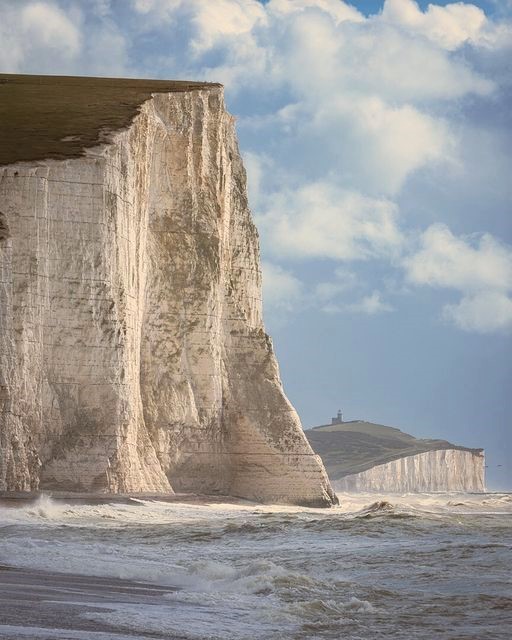
Soaring over 530 feet, the Seven Sisters are a bracing coastal hike
#Seven Sisters#East Sussex#English Channel#chalk cliffs#southern coastal path#coastline#seacoast#Beachy Head
167 notes
·
View notes
Text

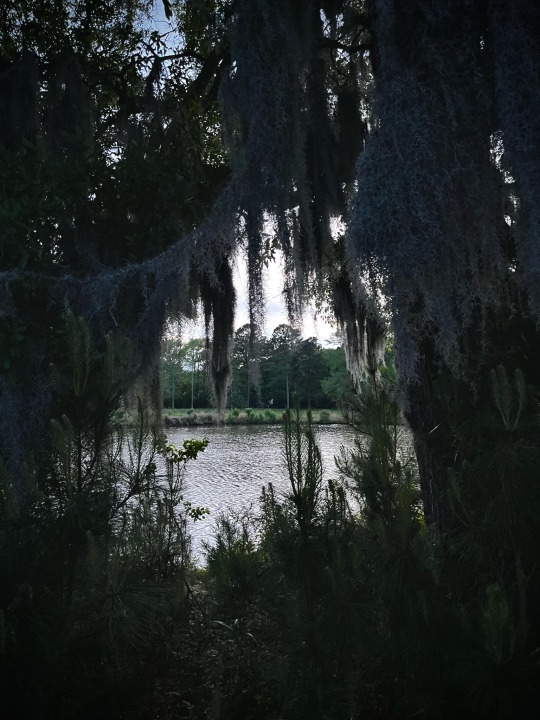
You can find me here.
#lowcountry#south carolina#southern#southern goth aesthetic#southern gothic#gothic#outdoors#nature#naturecore#adventure#spooky#mossy woods#spanish moss#moss#forestcore#forest path#forest green#coastal#beachcore#southern aesthetic#lowcountry lore#spooky aesthetic#dm me#me#message me#dms#photography#let’s talk#hiking#camping
24 notes
·
View notes
Note
Hello! Can you write an Eris x reader where they spend a day at the beach just relaxing and enjoying the beautiful place?
sure thing love! I had so much fun with this, thank you for the request💜
Coastal Waters
Eris x Reader fluff

You stripped off your sundress, daring Eris to race you to the water as you ran towards the shoreline in your bikini. As your toes reached the water, you felt muscular arms lifting you up and spinning you around. You giggled as Eris pressed rapid, sloppy kisses down your neck, whispering “I win,” before setting you down with him in the shallow water.
You turned, pressing your hands against his chest as he wrapped his arms around your waist, and smiled up at him. “I think I technically won, my toes did touch the water first,” you claimed, cocking a challenging eyebrow at him. Eris leaned down, his lips brushing yours as he whispered, “I guess it’s just your word against mine, then.” You shook your head, pulling him in to kiss you as your body arched into his, seeking out his touch in any and every way you could find it.
Eris pulled away, tugging your lower lip between his teeth before he glanced towards the caves to the south, near the Spring Court border. While the Autumn Court was known for cooler weather, it was level with Summer Court and its southern beaches boasted warm waters that you and Eris often escaped to for relaxation. He took your hand in his, the two of you wading through the waters to the cliffside.
Ducking low, Eris carefully led you inside the dark cave entrance, using his fire as a light to guide your path. Once you were deep enough in the caves that the sunlight disappeared, the two of you stopped and held each other close while Eris let his fire go out, and looked to the cave ceiling. After a moment of your eyes adjusting to the darkness, the bioluminescent creatures were visible to the both of you, glowing brightly in scattered formation across the dark rock, creating a sort of starry night sky just for the two of you.
You leaned your head against Eris’s warm, toned chest as you sighed and took in the beautiful sight of your personal light show. A soft kiss pressed to your temple, and you felt as though you were glowing yourself with the joy of this private moment with your mate. The two of you sat there for awhile, savoring this secret place of peace before you returned to the beach.
You spent the rest of the afternoon enjoying the warmth of the sun and crystal blue waters before sunset arrived, when you and Eris enjoyed the dinner that you’d packed. You laid on a blanket in the sand wrapped in his arms, murmuring sweet nothings to each other until the sun had set. A chill took over you briefly, until Eris covered you in his coat and winnowed the both of you home for a bath and a continuation of your peaceful evening as you read by the fire - Eris falling asleep with his head in your lap.

#acotar#acotar x reader#eris vanserra#eris x reader#acotar fanfiction#eris imagine#a court of thorns and roses#eris acotar#acotar fanfic#acotar fic#acosf#acotar fluff#eris vanserra acotar#eris vanserra x reader#eris x reader fluff#eris x y/n#eris x you#eris vanserra fic#eris vanserra fluff#acotar eris#eris acotar fluff#eris acosf#acotar eris fluff#acotar eris x you#acotar eris x reader#acotar imagine#acotar reader fic#acotar reader imagine#eris vanserra x you#eris fluff
109 notes
·
View notes
Note
What WERE those superfluous aspects of Tonitrui historical culture?
Before the death of their own creator, tonitrui culture was as vibrant and varied in custom and belief as any other you see among humans. Most of the hunter-gatherer tribes worshiped seasonal gods, with each population attributing different names and characteristics to these figures.
For some the winter was kind, a god of slumber and rejuvenation, of making tight knots and steadfast bonds, of art and music and story. For others winter was a god of trials, of enduring punishment after punishment like a rain of whips, this god could be the sternest of them all, but yet remained a teacher in how it brought light to shadowed flaws and weakness. And while it is obvious the gods of summer would often be distributors of bounty and respite, sometimes this god would also be a devil of its own, raising fiery tempers, striking blight and drought, and sparking wars and murder.
Each season demanded its own sacrifice, ofttimes in fall it would be hair, in winter it would be food (especially rendered fat to be burned in intricate conflagrations), in spring it would be flowers plucked before they could fruit, and in summer it would be blood of the unborn and born both. But the whims of these gods could change, they might demand a more indulgent gift one year, or an entirely different sort the next.
Those that traveled a solitary and nomadic path as soothsayer were simultaneously adored and feared and hated, and rarely spent more than a few years with one tribe before fortune drove them on again. The most renowned of them were known to have great wars fought over them, or were bribed with all the material gifts that could be offered, but they were never harmed nor threatened, for the lie of a soothsayer was the greatest of curses.
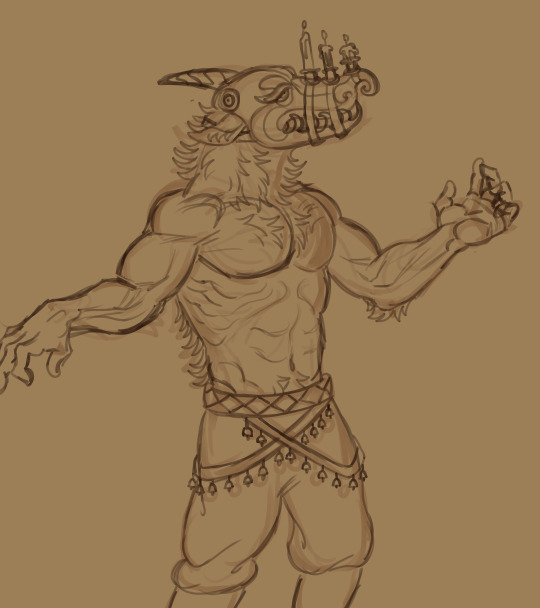
Pic: Nilgai wearing a reconstructed soothsayer mask and burning tallow candles. Amidst civil war, plague and famine, there has been an increasing resurgence in heretical practices
As the coastal tribes transitioned into more sedentary and permanent villages which gave rise to agriculture and monarchism, their spiritualism calcified into finite forms. A myriad of interpretations and faces and names for the gods all informed by the specific culture of a tribe as well as their history and the lands they hunted were progressively funneled and congealed until but one absolute form remained. Of course bitter debates and battles were raged over the particular aspects, but once the custom of kings began, the ever changing became shackled to the earth. It was known that each god had one name and two heads, one of ill and one of fortune, and when they walked upon the land, the kingdom must attract the attention of the glad countenance, and distract the cruel face so it looked away. Much was said on the folly of dividing the gods in this way, that the cruel aspects were just as vital as the supposedly kind, that it would make the kingdom weak if it was never tested with raging wildfires nor floods nor plague.
When their creator came to walk among them, belief in the divine quartet could hardly stand up to miracles made flesh. This centralized religion was quickly shattered, and the result was a cultural maelstrom, with the god-king standing within the center. After the murder of the tonitrui creator, there was a spiritual void. The very idea of worship became distasteful after such betrayal and grief, and for most it would have been hollow belief, and so the old gods became childrens stories, and spirits to sometimes wish to for luck, but little else.
Following this, tonitrui culture became far more imperialistic. Kings were gods unto themselves, their words infallible, their arms as long as the march of their soldiers. The remaining nomadic tribes in the southlands were eaten up by conquest, and a generations spanning war was held between the southern kingdom and the loose coalition of tribes in the north. After many years the kingdom won out and occupied the land, forcing its many customs upon the inhabitants and stomping down on the old beliefs, which were now seen as foolish heresy that must be replaced with complete obeisance and worship to the king. Seasonal sacrifices were replaced with taxes and military drafting, and belief in the quartet gods was limited to underground communities which met in secret, or the most isolated of northern tribes.
These three great shifts in tonitrui society progressively stunted the culture of its own people. Many customs were abandoned or stamped out alongside the gods, and only remain as sanitized vestiges, with little memory as to their original significance. Before tail docking became all but compulsory, marriage rites were taken by tying a couples tails together with an intricate knot that must be slowly unwound day by day for a week. Tail dancing or flagging similar to ribbon dancing was also commonplace, and some even had their tails broken and set in specific positions to indicate their role in society.

Pic: Newlyweds with tied tails
Horns, meanwhile, were always used as pedestals for artistic expression. The buds of children could be split down the middle to create the illusion of four horns as they grew, each one bearing its own prayer to a god of the quartet. They could be carved or notched or woven with thread between each horn to indicate social rank, or to display a number of feats such as how many lives a warrior had taken in battle, or how many children one had (by their nature tonitrui have a low birthrate, high infant mortality, and slow maturation, children aren't named until their first birthday, and fertility is seen as one of the most important aspects of ones role in society).

Pic: A woman with split horns
There were also snout flutes, made by carving holes through the nasal bone, and played through a series of snorts. Tonitrui are already predisposed to a number of nasal infections which can sometimes lead to flesh eating disease in coastal territories with high humidity, so this custom was thoroughly stamped out for fear of the necessary body modification exacerbating such a condition.
Monarchistic tonitrui culture is quite focused on preserving the body as a tool for society, either in its role as a soldier, for procreation, or production, all with the goal of keeping a healthy population for which to secure and expand its territory. As such there is a cultural preoccupation with cleanliness, nutrition, and general health, with a strong distaste for anything considered too indulgent or gratuitous. The body must be kept whole, for there is no veil between the physical and mental self, and when one harms their own body in any permanent or unnecessary way, they also alter their own nature. Scars and significant injuries are seen to fracture the wholeness of oneself, and can lead to unstable temperaments. These traits are only admired in soldiers, whose physical sacrifice to the state purifies any subsequent metaphysical harm. The body must be kept healthy specifically so that the monarchy can choose when it can be broken. Thus the oldest tonitrui tradition of sacrifice is perverted, stripped of its intrapersonal narrative.
52 notes
·
View notes
Text

On February 2nd, the Associated Press analyzed satellite imagery which showed “new demolition along a 1-kilometer-wide path on the Gaza Strip’s border with Israel.” The images, which revealed the recent destruction of Palestinian farmland, warehouses and other buildings, suggested that Israel had started creating what it has called a “buffer zone” in areas of Gaza adjoining the Israeli border, a project that Israeli leaders have been trying to pursue as part of their invasion of Gaza following Hamas’s October 7th attack. Israeli officials claim that such a step is necessary to allow residents of communities in the south of Israel to return to their homes without fear of another attack. “[All along] the Gaza Strip . . . we will have a margin. And they will not be able to get in,” Avi Dichter, Israel’s agriculture minister, told reporters on October 19th. “It will be a fire zone. And no matter who you are, you will never be able to come close to the Israeli border.”
For months, United States and European officials have repeatedly voiced opposition to the idea of Israel’s permanent militarized border zone within Gaza, with Secretary of State Antony Blinken saying in November that there should be “no forcible displacement of Palestinians from Gaza” and “no reduction in the territory of Gaza”—both outcomes that would likely result from such a zone. But the AP’s analysis, coupled with other recent events, indicate that Israel is forging ahead with creating its “fire zone” despite such objections. Indeed, on January 23rd, Israeli soldiers in Gaza were actively laying mines in and around two buildings in central Gaza close to the border with Israel, intending to destroy them, when a grenade fired by a Palestinian militant caused the explosives to go off, killing 21 soldiers. In the aftermath of the attack, three Israeli officials anonymously told the New York Times Israel was demolishing the buildings to create a “security zone,” while an Israeli military spokesperson said the soldiers who had died were operating to “create the security conditions for the return of the residents of the south to their homes.”
Israel’s work on the zone comes amid widespread speculation about the future of Gaza after the eventual end of Israel’s ongoing genocidal assault, which has already killed at least 27,000 people. American, Arab, and Israeli officials have debated what comes next for the coastal enclave, with Western governments pushing for a revitalized Palestinian Authority to govern Gaza—which Israel opposes—and far-right Israeli ministers advocating to expel Palestinians from Gaza and build renewed Israeli settlements. Yet even as these policy discussions remain unresolved, Israel is unilaterally exerting control over Gaza’s post-war reality by constructing a militarized zone inside the enclave that materially shrinks the amount of Palestinian land while leaving open room for Israeli Jewish resettlement of the Strip. The strategy recalls Israel’s modus operandi in the West Bank, where Israel has built hundreds of settlements in order to create “facts on the ground” to entrench its control before the international community can do anything about it.
Current and former military officials portray the creation of a militarized Israeli zone inside Gaza as necessary to prevent another attack on southern Israeli communities near the border. “People coming back to their homes [in Israel] don’t want to see someone [in Gaza] take out a rifle or an anti-tank missile or come to the fence, cross it, and kill them,” said Jacob Nagel, a former national security advisor to Prime Minister Benjamin Netanyahu and a senior fellow at the Foundation for the Defense of Democracies, a neoconservative think tank that advocates for US intervention in the Middle East. “We have to show them that the area there is empty. Otherwise, it would be very tough for them to come back.” But Muhammad Shehada, a Palestinian writer and analyst from Gaza, said creating a so-called buffer zone through the demolition of Palestinian homes and neighborhoods will only fuel more violence. “In the areas that were systematically razed and wiped out, you’re giving people a very strong revenge incentive,” he said. “Israel is basically creating a recruitment poster [for Palestinian militant groups].”
Indeed, the creation of the zone is likely to add to the list of Israeli war crimes committed in Gaza since October 7th. According to research by Corey Scher, a PhD student at the City University of New York’s Graduate Center, and Jamon Van Den Hoek, an associate professor of geography at Oregon State University, Israel has destroyed or damaged 143,900 structures throughout Gaza since October 7th, around 1,329 of which were in the proposed zone. Human rights experts have said that the destruction of civilian buildings and infrastructure may constitute war crimes. And if the Israeli zone continues to be created, more such homes will likely be demolished. “If there are no concrete, direct security grounds for why these houses have to be torn down, the destruction of civilian homes is completely illegal,” said Miriam Marmur, public advocacy director at Gisha, an Israeli human rights group focusing on Gaza. Nagel, however, is not concerned with such complaints: “There are no civilian buildings in Gaza,” he said, claiming that most buildings in the Strip are filled with weapons or contain tunnel entrances.
Keeping Palestinians out of the zone is also likely to involve further violations of international law. Some former Israeli officials have suggested laying mines in the border area, though the Israeli army has not publicly committed to this idea. Nagel predicted that the zone would be enforced by live fire. “I like to call it a ‘killing zone,’ but since ‘killing zone’ is not a nice term, we use the words ‘buffer zone,’” Nagel told Jewish Currents, clarifying that regardless of what the area is called, he thinks that “someone [who] is moving there without permission is going to be dead.” Such a policy would be illegal under international law, said Omar Shakir, Israel and Palestine Director at Human Rights Watch. “No territory can ever be a free-fire zone,” he said. Shakir added that, under international law, live fire force can only be deployed during war if it is proportionate—meaning that attacks on a military site must not include harm to civilians that is excessive in comparison to the expected military advantage of an operation—and if it discriminates between civilians and combatants.
There is precedent for Israel using lethal force to limit Palestinians’ access to land near the Israeli border. Since Israel pulled soldiers and settlers out of Gaza in 2005, the army has violently barred most Gazans from coming within 300 meters of the Israeli barrier—a policy that has led to indiscriminate attacks against Palestinian civilians in that zone, according to the Palestinian Center for Human Rights. From 2010 to 2017, Israeli soldiers opened fire 1,300 times in the 300 meter area, killing 161 Gazans there, according to Gisha. In 2018, when Palestinian protestors started the Great March of Return, congregating near the border to call for the end of Israel’s blockade of Gaza and the right of return to lands they were expelled from in 1948, Israeli snipers responded by shooting and killing 223 Palestinians. Over the years, Israeli soldiers have also cracked down on Palestinian farmers and herders working in the zone, sometimes spraying herbicide or razing farmland in order to enforce the prohibition on Palestinians coming near the Israeli barrier. Marmur said that many of these enforcement measures violated international law. “There is little reason to believe that the new buffer zone would be enforced differently, raising concern over an expansion of Israel’s illegal practices,” she said.
The militarized zone Israel is now planning to impose within Gaza would triple the size of the pre-October 7th iteration, severely impacting Palestinians in the Strip. The demolitions would worsen the housing crisis in the enclave, where nearly 70% of homes in Gaza have now been damaged or destroyed by Israeli bombs. In addition to leaving potentially thousands with no home to return to, the zone would deepen food insecurity in the Strip, since a third of Gaza’s agricultural land lies in the proposed zone. Due to Israel’s restrictions on humanitarian aid entering the Strip, Palestinians in Gaza already face a hunger crisis and virtually every family skips a meal every day, with 400,000 people at risk of starvation. The loss of further farmland will only compound this situation. In addition to these dire short term effects, the new Israeli zone may permanently “eat away Palestinian lands, adding to years of systemic dispossession of Palestinians,” Marmur said. Israeli officials claim that their control of this land will be “temporary,” but Nadia Hardman, a researcher in the Refugee and Migrants Rights Division of Human Rights Watch, told Jewish Currents that the scale of the destruction in the region indicates that Palestinians won’t be able to return their homes there “at any point in the foreseeable future.”
A permanent Israeli zone inside Gaza stands to significantly reshape the balance of power in any post-war scenario. In addition to allowing Israel to take over parts of Gaza’s territory—in the process creating, as per Shehada, “conditions that would push people to leave the territory”—such a zone could also pave the way for the building of new Israeli settlements. Resettling Gaza has been a long-standing demand of the Israeli right, one that has gained new momentum since October 7th. Indeed, on January 28th, a thousand Israeli settlers and their supporters—including 12 ministers from the ruling Likud party, along with national security minister Itamar Ben Gvir and finance minister Bezalel Smotrich—joined a Jerusalem conference to promote the resettlement of Gaza. Members of Likud have also proposed legislation to repeal the ban on Israeli civilians entering Gaza, which would allow settlers a foothold in the territory. Observers say a permanent Israeli zone in Gaza is likely to accelerate this process. “We have watched this play out again and again in the West Bank and also in Gaza before 2005: Israeli settlements always start off with a security justification,” said Zaha Hassan, a human rights lawyer and a fellow at the Carnegie Endowment for International Peace. “It starts with a military base going up somewhere and then the area being declared a no go zone. And then slowly that security justification becomes muted—and then we start seeing settlements.”
Yet even as human rights advocates raise such alarms about the consequences of the zone, the US may be softening its opposition to the project. That opposition was never particularly forceful: “There’s been very little outrage from the US administration about the creation of the buffer zone as it’s been happening in real time,” Hassan said. As a result, Israel has proceeded by simply disregarding the US’s reservations, an approach that seems to have paid off. Last month, Blinken hinted the US may accept a temporary Israeli buffer zone inside the Gaza border, saying there may need to be “transitional arrangements” to ensure Israel’s security and “make sure that October 7th can never happen again.” But according to Hassan, “there’s not a lot of credibility regarding Israeli assertions that these things are going to be temporary.” She pointed to how Israel’s separation barrier in the West Bank was originally portrayed by Israeli officials as a temporary security measure, only for it to remain standing 20 years later—with Israeli officials coming to openly describe it as a permanent border between Israel and the occupied West Bank. Israel’s temporary measures, Hassan concluded, “have a way of sticking around for a long time.”
-- "An Israeli “Buffer Zone” Could Shape Gaza’s Post-War Reality" by Alex Kane for Jewish Currents, 6 Feb 2024
50 notes
·
View notes
Text
I'm definitely a Stewardist Gondor stan, something that is not news to most of my followers, and I have my gripes with Aragorn's rise to power there, which is also not news. But there are some things I like about how book Aragorn conducts himself wrt Gondor, so credit where it's due:
He risks everything to take the Paths of the Dead and pass through Lebennin, liberating slaves of the Corsairs and the coastal peoples of Gondor. He convinces the southern Gondorians to accept him and a large number follow him to the Pelennor. Thus, Aragorn's role in the victory at the Pelennor is dependent on his leadership of a largely Gondorian army.
He doesn't immediately present himself as ~the chosen king~ or whatever, but actively works to avoid destructive civil strife in Gondor by presenting himself only as captain of the Dúnedain of the North.
The first thing Aragorn does in the city is heal Denethor's heir, the foremost potential obstacle to his accession to the kingship, and he approaches Faramir with respect and compassion.
After healing Faramir, Éowyn, and Merry, he proceeds to heal the suffering soldiers of Gondor, again gaining Gondorian acceptance and acclaim through his actions instead of relying solely on a birthright claim—but this time, as renewer as well as warlord.
Even after gathering his armies and riding out to Mordor, Aragorn initially doesn't refer to himself as a king, only switching when it's suggested by a Gondorian prince.
His coronation follows the Gondorian custom in which the Steward asks the Gondorians present if they will accept Aragorn as king, and only proceeds once he's been accepted by them. There's no sign of a political maneuver here in terms of only selecting people who will agree or whatnot—Aragorn has had to genuinely earn the respect and love of Gondor's people.
#he's so much more eärnil than arvedui adjkfakjdf#anghraine babbles#legendarium blogging#long post#aragorn#legendarium fanwank#ondonórë blogging
86 notes
·
View notes
Photo

A little while ago I played in a Bionicle based TTRPG system like D&D by Redstar Gaming called Dorai Nui as a Toa of Plantlife named Whakatau (Also known as Whaka for short or “Weed Boy”)
This Campaign took place in an AU version of Bionicle’s events where the OG Toa Mata arrived on Mata Nui on time instead of floating 1000 years at sea and losing their memories. The Makuta did not have enough time to prepare for them and was swiftly defeated and Mata Nui was revived and reformed Spherus Magna.
During the Bionicle Story
During the events of the main Bionicle storyline Whakatau was a Matoran living on the Southern Continent and witnessed to both events of the Island of Voya Nui getting launched into the sky and getting stuck up there, and then it's decent back down and rejoining with the Continent. Had he been any closer he could have ended up being one of the poor saps brainwashed by the Piraka or in Mahri Nui the coastal city that fell beneath the waves.
Matoran
After acclimating to living on the surface of Spherus Magna Whakatau became part of a Matoran Search & Rescue squad living out in the untamed wilderness outside of the city, taking care of the forest and coming to the help of Matoran who get lost or injured out there and were often in difficult locations to get to. They can't always expect the Toa to help while they are busy fighting for the fate of the universe, so somebody has to act on smaller everyday incidents. He and the other Matoran Rangers were on duty to traverse the wilderness, get into difficult places that other Matoran can't reach and bring the matoran back while also tending to their injuries. As a result he has learned to be very fast on his feet and looks for the quickest path from point A to point B traversing over obstacles in his path. While in the forest he was at home, the city has proven to be difficult for him to navigate because his parkour tactics has gotten him lost and stuck on top of skyscrapers more than once. He also is a trained Medic and is able to quickly patch up injuries to keep people alive and moving.
New Toa
It was thanks to his exceptional skills in search and rescue that Whakatau was chosen to be the new Toa of Plantlife, his Hiking staff and Grappling hook transformed with him to become a Bo-Staff with a Grappling Claw at the end which he could shoot out towards a target in order to grab hold and then pull them to him or quickly zipp over to them. Having little to no social skills and feeling uncomfortable in the big city Whaka was slow to open up to his companions but was determined to use his skills to help them, even if he wouldn't be getting the most glory from it he could use his control of plant life to debilitate enemies and make them easier for the stronger members of the team to hit.
At the time the team included Whaka himself (The Medic) Keeps the rest of the team up while keeping the enemies down
Vaphi the Toa of Sonics (The Engineer) Builds the gear and machines
Vojakua the Toa of Plasma (The Blacksmith) Builds the weapons and armor
Parkur the Toa of Iron (The Muscle) Is the big guy with a really big sword who hits really hard
Koqunui the Toa of Ice (The Element Crafter) Is the one who's very good at using her elemental powers to make objects and structures
and Aruuko the Toa of Stone (The Veteran) Been a Toa longer than the rest of the team and knows the job
On their first mission they were tasked with dealing with some criminal activity in the city which turned out to be the work of the Dark Hunters. They managed to intercept a deal going on in a warehouse. Then things suddenly went very south as the Right-hand Lady in charge of the New Dark Hunters set off an explosion that killed Aruuko and Koqunui, and left Whakatau with a black burn scar on his mask. Following that mission Whakatau reluctantly decided to take on the role of Leader of the team in order to keep the rest of his companions safe, but he also developed a darker vindictive side especially towards all Dark Hunters. As a Toa he's not supposed to kill, but he started to grow a fondness for using his plants as torture devices, such as: Poison, Blinding Pollen, Acid, Stinging Needles, Burrowing thorny vines, and his signature torture method, a super Hot Pepper that deals Chemical Fire damage like Napalm which he appropriately named "The Makuta's Piss" (Inspired off of a cop I knew describing being Pepper Sprayed like being pissed in the face by the Devil!) And Whaka had a special exception for the Right hand leader of the Dark Hunters who he wanted to make suffer for the deaths of his companions before breaking the Toa Code and finishing her.
The Dark Hunters and Makutas
In our time as Toa we met and fought many Dark Hunters and and other criminals within and outside of the city, but nothing could prepare us for our first Makuta! For those not familiar with Bionicle the Makuta are the most terrifying of all enemies, basically equivalent to a Devil, however this Makuta named Zalos was a little different than the previous generation of Makutas. First off the old Makuta had made themselves into beings of Gas and Energy contained within a mechanical body, these Makuta had not grown to that point and were still partially organic. Second these Makuta were created by Mata Nui after the original Makuta Coup d'etat, his purpose for making them was unknown but after the betrayal of the first Makuta people were very distrusting of the new ones. There used to be 10 of them, now there were only 4 remaining. Third and most importantly while the original makuta has a tendency towards being sociopathic, these new Makuta are more neutral. Initially our team was very wary when Makuta Zalos just showed up in New Metru Nui and decide to make himself at home, we wanted to stop him and Parkur himself even attempted to face him alone, but being only new Toa we didn't stand a chance even if we tried, and it turned out we didn't even need to fight him because Zalos wasn't trying to be a threat to anybody, he just wanted a place to settle down, collect art, and become a gameshow host. Our team ended up becoming friends with him and he became a trusted informant having Rahkshi all over the city allowing him to monitor criminal activity.
Zalos would eventually open up to Whaka about what happened his 6 fallen fellow Makuta, they were killed off by other Toa. Zalos's Makuta sister couldn't even bring herself to fight back before she died, and Zalos briefly contemplated revenge but knew if he went down that direction it would only prove those Toa correct and perpetuate the cycle of hate and violence. Being reminded of his own fallen companions Whaka started to introspect on his own cruelty and hunger for revenge, if a Makuta could overcome the temptation to hate then what did that make him, and if he started killing for his own satisfaction would he be perpetuating his own cycle of hate? He then further started to question how he thought about the Dark Hunters when he met one who only joined Dark Hunters to help her Toa friend who had fallen ill and needed an expensive medicine. Rather than seeing all Dark Hunters as the worst scum on the planet made up of only psychos and monsters, Whaka started to see them as people. While he could probably never bring himself to forgive the Dark Hunters who murdered his friends, he was no longer going to let them make him a monster too.
New Friends
After saving the Toa friend of the sympathetic Dark Hunter, the New Metru Nui team returned to the city awaiting two new members of the Team:
Glacius the Toa of Ice and Fire (The Tank) He was a Matoran from Karzahni (Bionicle equivalent of Hell) who had been experimented on and became a badass with two large shields to be an unstoppable wall that charges in and beats the enemies faces in with his Shields!
And Ingram the Toa of Air (The Driver) Ingram was Glacius's best friend after Glacius was freed from Karzahni, he was a Merchant, he owned a large truck we ended up using as a mobile base, and he had a bit of imposter syndrome over being picked to be a Toa and not feeling like he earned it.
The Newly complete Team would stop a Drug problem going on in New Ko-Metru and together bring down the Rahi-Nui a Monstrous Chimera of several powerful Rahi Monsters created by the Old Makuta, and Whaka would change his main Mask from the Kanohi Huna (Mask of Concealment) to the Kanohi Kadin (Mask of Flight) representing how he no longer feels the need to Lurk and Hide, now his main focus is being Mobile and being able to get to all his allies on the battlefield to do what he initially set out to do in the first place: Keep his allies up and support them!
Ingram would occasionally go off on his own with the Truck to get shipments completed committed to his previous job as a Merchant and delivery driver...but after not coming back from one of his runs the team would eventually find the Truck broken and Ingram missing. We wouldn't know till later but Ingram would eventually turn up dead.
Before discovering the death of Ingram, Whaka found the Shadowed One leader of the Dark Hunters and his Right hand Lady in the city! He decided to pursue them only to get information, but when he realized they were going to escape the city in a Submarine Whaka decided this time he could not let them get away and chased them on the back of a SHARK till he caught up with the Sub and trapped them in a tangle of Kelp like a giant Plant-based Kraken! The two abandoned ship and retreated back to land but Whaka would not let them go and stood his ground against them enduring attacks while he waited for his team to show up for backup and they certainly came! Together we defeated the Shadowed One and Righty and then brought them to Justice by not killing them but trapping them forever in a crystalized Protodermis Toa Seal, and as a reward Whakatau claimed Right's Sword and The Shadowed One's Plasma Axe, then with the help of Vaphi and Vojakua they combined the two weapons into 1 Plasma Sword which Whaka named "Dark Hunter"
The Team could not celebrate long though because right after Ingram would turn up dead, Glacius would go bezerk on his own personal revenge quest to find the murderer who killed Ingram and eliminate him, and Whakatau had a depressive episode thinking he's failed to be a good leader and now one of his teammates died under his watch when that was the very thing he had tried to prevent. Glacius would knock some sense into Whaka both figuratively and literally as they decided to have a sparring match and let their emotions out. Glacius kicked Whaka's ass and the two of the felt better afterwards as well as solidified their own friendship. Then they beat the Dark Hunter who killed Ingram by ramming him with the Truck and Glacius blew him up...Whaka may have decided that revenge is not the right path, but Glacius is the more pragmatic of the two of them and saw no sense in letting a serial killer continue to live. Glacius was put on trial for breaking the Toa code but was pardoned.
In the End
In the Final Session our team would take on the Toa Killer Robot Marendar with the help of the allies we made up to this point such as the 4 remaining Makuta and the Entire Bohrok Hoard!
Parkur went off to be a Parole Officer to the remaining Dark Hunters and help them start a new organization for good, The ended up making a Rock Band.
Vojakua decided to go look for a Rogue Toa of Plasma who had used his powers irresponsibly and needed to be stopped before he hurt anybody else.
Whakatau, Glacius, and Vaphi remained in the city continuing to protect for many more years to come.
Glacius became the Co-host on Makuta Zalos's Game show
Vaphi invented Robot Hounds to help aid in Search and Rescue missions when the Toa can't be around.
And Whakatau runs a Farm near the City which helps provide Food, Medicinal Plants, and Combustable Lemons that can be used as Grenades.
#Bionicle#Bionicle Toa#Toa#toa of plantlife#plantlife#Toa Oc#Bionicle oc#Angel Wings#revenge#redemption#AU#alternate canon#ttrpg art#ttrpg family#roleplay#red star#Dorai Nui#History#Makuta#Peppers#Toa team#Ranger#Doctor#Medic#Vines#Trees
33 notes
·
View notes
Note
Best chreachure?
Okay, in real life?

Right now I'm a BIG fan of the patagonian mara! They're a little oddly shaped, kinda like if deer and rabbits had offspring (and walk like it too!), but they're 100% part of the rodent family!
They're native to central and southern Argentina, but if their living situation turns to shit, they will go anywhere so long as it provides shelter, water, and fruits! (Have I mentioned they're herbivores?)
They typically travel in herds, however the most common structure usually involves two mates.
As for FICTIONAL creatures, my favourite mainstream one is Psyduck!

LOOKIT THIS LITTLE GOOBER!!
These little guys showed up in Pokémon all the way back in Gen1! It usually evolves at level 33 into Golduck, however would you truly ever?
They're typically a very introverted species, going of solo instead of in pairs or groups, however can become deeply loyal and devoted to others.
Their psychic powers are DEEPLY heighted when their migraines flare up, and utilizing those powers is sort of their ibuprofen.
And my favourite fictional creature I've worked on is the Mage Hunter! (Yes I know it's from DnD 5e but I've done a lot of work on it to fit my homebrew setting of Coinia)

Mage Hunters are native to the coastal region of Steam, and are largely domesticated by the Empire of Norsys. They're very similar to otters in a number of ways, such as their affinty for swimming, however they are typically around the size of a mule.
They prefer colder climates, however not like, arctic cold? They have very thick hides and plenty of facial fur, but throwing them in an ice bath would illict the same reaction as it would to just about anyone else.
They're omnivores, and very much hunters. In their non domesticated state, they will follow creatures who utilize magic (which they can feel through the large crackling apendages on their body), or invertabrates that cross their path such as crabs, clams, snails, etc.
They travel in packs of 4-9, however larger packs can end in the pack becoming entirely dissolved.
#patagonian mara#psyduck#pokemon#pokemon concierge#LATSAS#my art#dnd#digital art#d&d#dungeons and dragons
15 notes
·
View notes
Text
Hotels and homes destroyed, impassable roads and thousands of people cut off. This is how Acapulco, in the Mexican state of Guerrero, has been left after the passage of Hurricane Otis, the most powerful Pacific storm to make landfall on Mexican territory in the last 30 years. The cyclone, which in 12 hours went from a tropical storm to a category 5 hurricane, the highest possible classification, has left the popular tourist destination resembling a war zone with uprooted trees, debris, roofs torn off and buildings without walls. Neither the National Meteorological Service (SMN) nor local and federal authorities were able to predict the intensity of the hurricane. Scientists were also caught by surprise. The speed with which the cyclone intensified was unusual and forced Mexican authorities to issue an evacuation alert for the area just hours before Otis made landfall.
The SMN warned at 12:00 p.m. Tuesday, that the hurricane would reach Acapulco at 6:00 p.m. the following day. However, the storm arrived earlier than expected and devastated the coastal city at 12:25 a.m. Wednesday. Winds of more than 270 kilometers per hour (168 mph) hit the town and the state of Guerrero, one of the poorest in the country, destroying everything in their path. More than 500,000 people were left without electricity, internet and telephone connection in the early hours of the morning and only part of the service has so far been restored. The breakdown of communications has complicated access to the affected areas and there is still no official information on the number of victims and the amount of damage caused, although it is expected that material losses will amount to millions of dollars.
The unusual power of the hurricane has attracted the attention of the scientific community, which links the devastating power of Otis to the El Niño season, a phenomenon associated with changes in the atmosphere and the fluctuation of water temperature in the Pacific. “There is a hypothesis that it could be related to the rise in ocean temperature, which does not mean that there are more hurricanes, but it does mean that when there is one, the cyclone accelerates its formation by taking on more energy under these conditions,” explains Claudia Rojas of the Department of Process Engineering and Hydraulics of the Metropolitan Autonomous University (UAM).
There are those who point to a relationship between climate change and the strength of hurricanes, although the scientific community is still investigating the matter. “El Niño is inducing these cyclones to reach high categories. However, it is difficult to attribute the responsibility for Hurricane Otis to climate change,” says Christian Domínguez, a researcher at the Institute of Atmospheric Sciences of the National Autonomous University of Mexico (UNAM). “What is known on a global scale is that with climate change there will be fewer hurricanes in the Pacific, but they will be more intense,” he adds. “With the information we currently have, it is not so clear that the intensity has to do with climate change because there are not so many historical records, although we have not ruled it out.”
After making landfall, Otis was downgraded to a tropical storm after depositing heavy rainfall in several states in central and southern Mexico. However, the threat has not yet passed. “The risk is not only posed by the strength of the winds. There are more dangers that such a phenomenon can entail, such as landslides and the flooding of rivers and streams,” says Domínguez. In Acapulco, some 20,000 people live in areas susceptible to flooding or landslides. The hurricane season in the Pacific begins around May 15 and ends around November 30, as such Guerrero could still experience the consequences of other cyclones, says Rojas. “Research work has shown that after a prolonged drought, very intense rainfall events occur, as is the case with tropical cyclones that can reach these [high] categories.”
Otis is not the first hurricane in recent years to strengthen so rapidly. In 2015, Tropical Storm Patricia escalated to a Category 5 hurricane in 10 hours. The difference with the current phenomenon was that it did so offshore, and authorities in the states of Jalisco, Colima and Nayarit were able to evacuate 50,000 people before it made landfall. The storm, catalogued by the SMN as “extremely dangerous” and by the media as the “largest in history,” quickly lost strength after making landfall in Mexican territory thanks to the mountainous system of the Sierra Madre Occidental, which eroded the outer ring of the cyclone and prevented greater damage and devastation. Guerrero, in this case, did not have the same luck.
Acapulco International Airport, which receives millions of tourists every year, has been completely flooded and suffered serious damage to its infrastructure, forcing the suspension of all flights. The main highways are also closed, preventing communications with Mexico City. Mexican President Andrés Manuel López Obrador had ordered his Security Cabinet to go to the affected area, but on seeing the seriousness of the situation, he decided to personally supervise the rescue efforts himself. The Mexican army has initiated an emergency protocol and 37 shelters have been set up throughout the state for victims.
15 notes
·
View notes
Note
Im not sure if you're a hiking person, but How is hiking/nature in Catalonia? I've been learning the language for the past few months and i am interested in visiting and I really love being out in nature and hiking
Hi! First of all, sorry for the delay in answering, I've been very busy this week and I've left the blog on queue, I'm catching up today.
There's lots of cool places to hike!
Historically, hiking has been very important for keeping alive the culture and language, ever since the 19th century (as a way to getting to know the country and its history, since the population had been denied its own history) and especially until the Franco dictatorship (we have mentioned before how people used going hiking as a way to get away from the police and being able to speak Catalan during the times of illegalization).
There are many hiking associations in Catalonia, you can find them with names like "centre excursionista" or "grup excursionista". I don't know how long you're staying, but if you were to stay for a relatively long time I'm sure you could probably find some hiking association near wherever you stay.
Otherwise, you might also be interested in Wikiloc. It's a website (created by a Catalan) where everyone can upload the routes they like. It's very popular and there's lots of hikes in all areas, and it shows you the route and all the information and what you can see in the way.
There's many places to hike in all around the country. There are many natural parks, with 16 being recognised above the other in (Southern) Catalonia + 1 in Northern Catalonia.
From North to South, by type of landscape:
IN THE PYRENEE MOUNTAINS:
1. Regional Natural Park of the Catalan Pyrenees (Northern Catalonia).
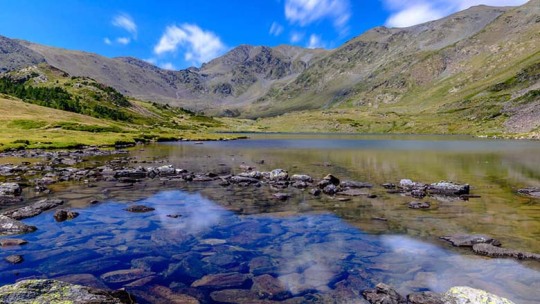
Includes the Canigó mountain, legendary and symbolic mountain for Catalans. If you go there for Sant Joan festivity (June 23rd), you can join the hike to go get the fire on top of the mountain (we explained it in this post).
There's many hikes in the websites Tourisme Canigou and Sud Canigó.
2. Parc Nacional d'Aigüestortes i Estany de Sant Maurici
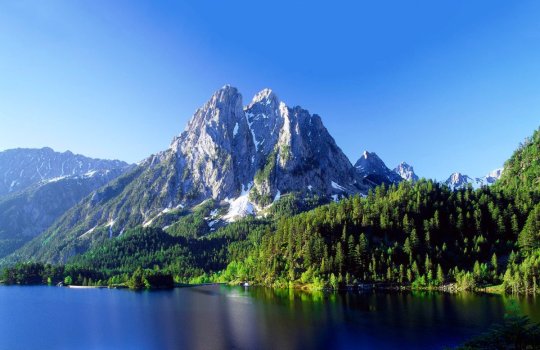
This is another beautiful park in the Pyrenees and the Sant Maurici lake. It's the only natural park in Catalonia that is considered a National Park in the Spanish system.
3. Parc Natural de l'Alt Pirineu (High Pyrenees Natural Park)
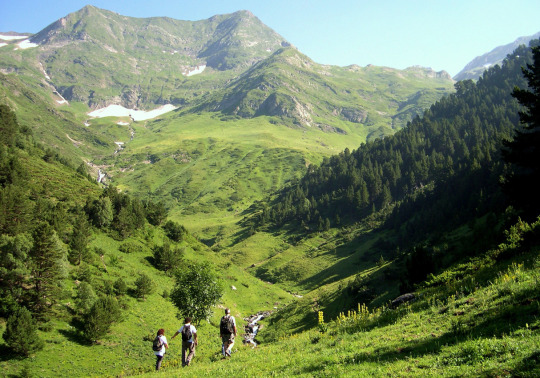
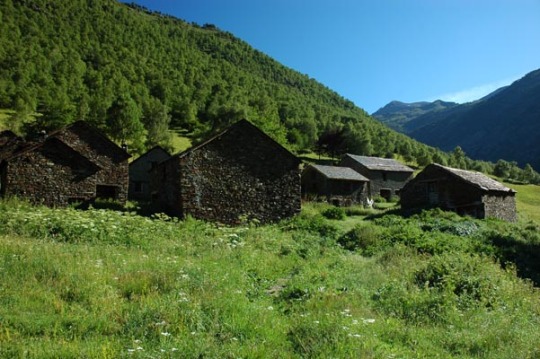
Beautiful mountains and, just like for all the other parks in the Pyrenees, near valleys with beautiful villages of Medieval origin with a heritage of Romanesque churches (the ones in Vall de Boí are recognised as a UNESCO World Heritage Site).
4. Parc Natural de les Capçaleres del Ter i del Freser

Where the Ter and Freser rivers are born. It includes the Núria Valley (Vall de Núria).
5. Parc Natural del Cadí-Moixeró

Includes the iconic Pedraforca mountain.
ASLEEP VOLCANOES:
6. Parc Natural de la Zona Volcànica de la Garrotxa (Natural Park of the Garrotxa Volcanic Zone)
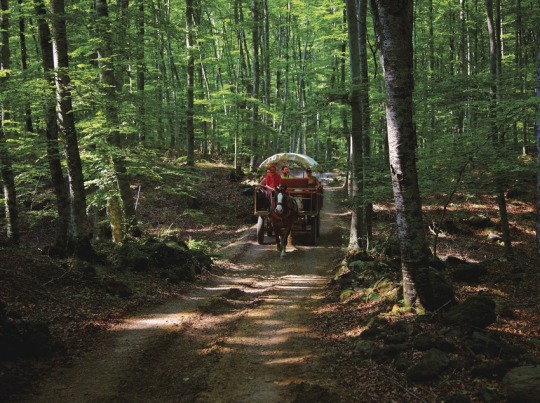
Includes the Fageda d'en Jordà (Jordà birch tree forest) and cool Medieval towns like Santa Pau, Besalú, Castellfollit de la Roca, els Hostalets d'en Bas, and more.
COASTAL PARKS:
7. Parc Natural del Cap de Creus (Creus Cape Natural Park)
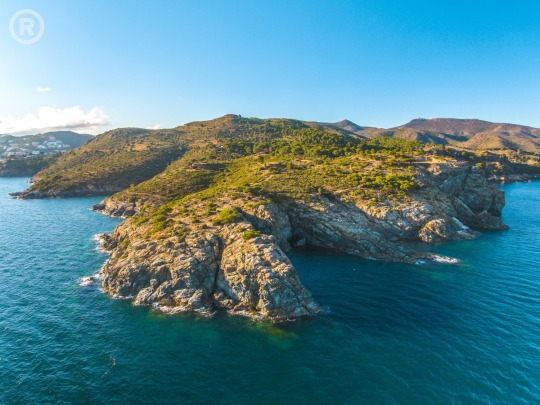
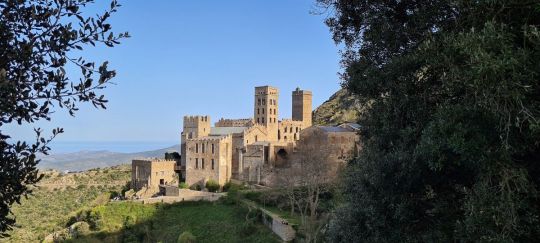
Beautiful coastal area in the Costa Brava, also includes the Medieval monastery Sant Pere de Rodes. In the area there's lots of typically Mediterranean-style towns with white walls, some of them very touristic and some of them less so.
8. Parc Natural del Montgrí, les Illes Medes i el Baix Ter


In the coast of the Costa Brava, it's very beautiful. Also near lots of cute towns of Medieval origin.
9. Parc Natural dels Aiguamolls de l'Empordà (the Empordà Wetlands Natural Park)

And on the opposite end of Catalonia:
10. Parc Natural del Delta de l'Ebre (Ebro Delta Natural Park)

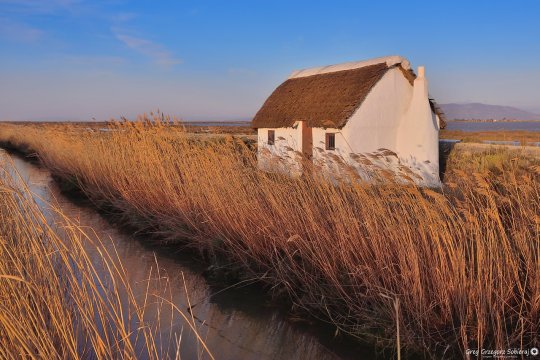
Where the Ebro river reaches the Mediterranean sea. Famous for its rice fields and birdwatching. It's very flat, so it's a good idea to hire a bike and bike through the paths among the rice fields to the sea.
OTHER MOUNTAINS:
11. Parc Natural del Montseny
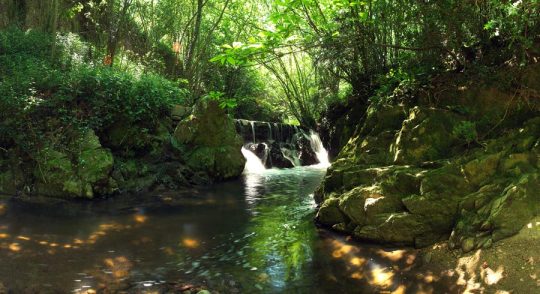
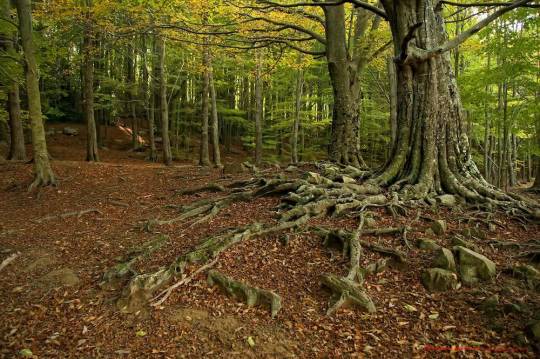
12. Parc Natural de Sant Llorenç del Munt i l'Obac
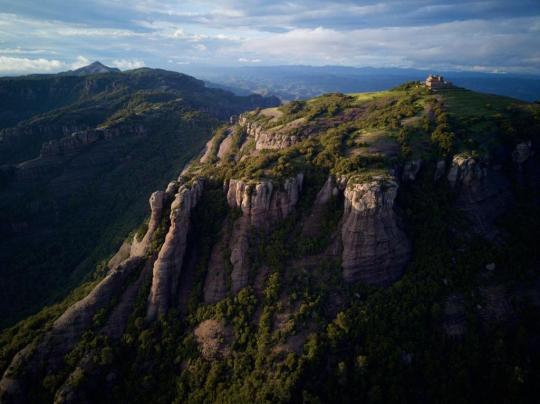
13. Parc Natural de la Muntanya de Montserrat
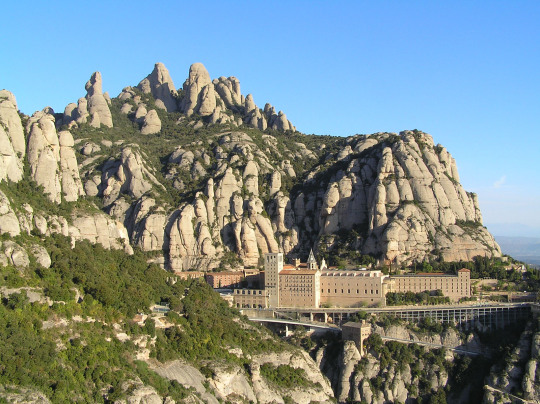
Montserrat is one of the most famous and sacred mountains in Catalonia. It has a very characteristic shape and landscape and is home to a monastery over 1000 years old that guards the Moreneta (black Madonna, patron saint of Catalonia).
14. Parc Natural de Collserola
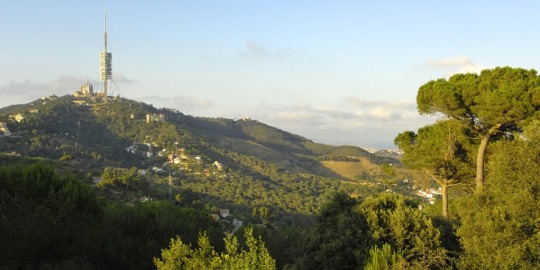
Collserola is the mountain range that overlooks Barcelona city.
15. Parc Natural de la Serra de Montsant
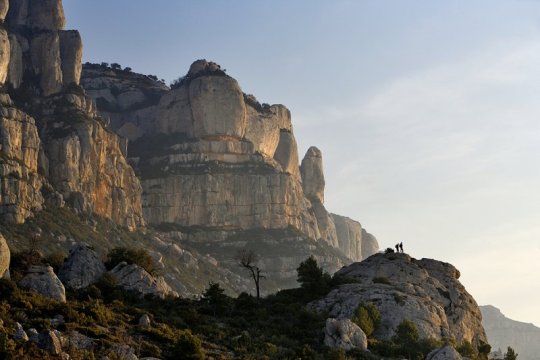
Located in the Priorat wine area (to take into account if you are wine lovers), the Monstant mountain range is located in a very rural area with lots of vineyards cultivated on the mountain slopes and also lots of historical tiny rural chapels, as well as the ruins of the Escaladei Carthusian monastery.
16. Parc Natural dels Ports

Mountains and lots of natural swimming pools you can bathe in.
You'll be able to find hikes in the websites of all of them.
I hope this was useful and that you enjoy your holidays!
#natura#catalunya#natural park#natural parks#hiking#nature#hike#travel#europe#landscape#traveling#explore#wanderlust#adventure#travel photography
41 notes
·
View notes
Text
Top 10 Motorcycle Routes in Singapore to Explore in Motorcycle: Rent and Ride
Singapore, though small in size, holds a plethora of scenic and thrilling motorcycle routes waiting to be explored. Whether you're a seasoned rider or a novice adventurer, the Lion City has something for everyone. With the convenience of motorcycle rental services, exploring these routes has never been easier. So, gear up, hop on, and let's delve into the top 10 motorcycle routes in Singapore that promise breathtaking views, cultural immersion, and unforgettable experiences.
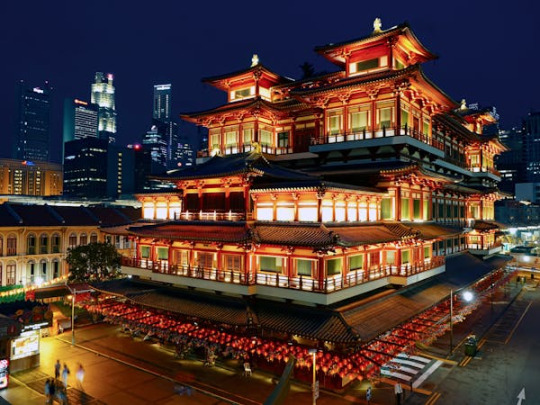
Marina Coastal Expressway (MCE) to East Coast Parkway (ECP) Loop Kickstart your journey with a scenic ride along the Marina Bay skyline via the MCE. Cruise down the ECP, soaking in panoramic views of the coastline and lush greenery. Stop by East Coast Park for a refreshing seaside break before looping back to complete the journey.
Mandai Road to Bukit Timah Nature Reserve Escape the urban hustle and bustle as you navigate through Mandai Road's winding paths surrounded by verdant foliage. Make a pit stop at the Bukit Timah Nature Reserve, where winding roads lead to breathtaking viewpoints amidst Singapore's only remaining primary rainforest.
Punggol Promenade to Coney Island Experience the serenity of Singapore's northeastern coastline with a ride from Punggol Promenade to Coney Island. Traverse along picturesque waterfronts, mangrove swamps, and wooden boardwalks, offering a glimpse into the island's rich biodiversity.
Southern Ridges Trail Embark on a journey through lush greenery and elevated walkways along the Southern Ridges Trail. Start from Mount Faber Park, traverse through Henderson Waves, and culminate your ride at Labrador Nature Reserve, offering panoramic views of the city skyline and the harbor.
Changi Village to Changi Beach Park Explore Singapore's eastern charm with a leisurely ride from Changi Village to Changi Beach Park. Marvel at rustic kampong houses, historical landmarks, and pristine beaches, offering a glimpse into Singapore's rich heritage and natural beauty.
Kranji Countryside Discover Singapore's rural side with a scenic ride through the Kranji Countryside. Meander through quaint farms, orchards, and nature reserves, immersing yourself in the tranquility of lush countryside landscapes juxtaposed against urban skyscrapers.
Sentosa Island Circuit Embark on an exhilarating ride around Sentosa Island's scenic circuit, offering breathtaking views of pristine beaches, iconic attractions, and lush greenery. Explore hidden coves, seaside promenades, and adrenaline-pumping activities along the way.
Western Adventure: Lim Chu Kang Road to Kranji Traverse through Singapore's western frontier with a ride from Lim Chu Kang Road to Kranji. Wind your way through rustic villages, marshlands, and historical landmarks, offering a glimpse into Singapore's agrarian past and natural heritage.
Coast-to-Coast Trail Embark on an epic cross-island adventure along Singapore's Coast-to-Coast Trail, spanning 36 kilometers from Jurong Lake Gardens to Coney Island Park. Experience diverse landscapes, from urban parks and nature reserves to park connectors and scenic waterfronts.
Murai Reservoir to Chestnut Nature Park Conclude your journey with a scenic ride from Murai Reservoir to Chestnut Nature Park, traversing through tranquil reservoirs, lush forests, and idyllic picnic spots. Immerse yourself in the sights and sounds of nature, rejuvenating your spirit amidst Singapore's urban landscape.
Conclusion: From coastal highways to verdant nature trails, Singapore offers a myriad of motorcycle routes waiting to be explored. With the convenience of Singapore's Best Motorcycle rental service, riders can embark on thrilling adventures, immersing themselves in the Lion City's rich tapestry of culture, heritage, and natural beauty. So, rev up your engines, embrace the open road, and embark on an unforgettable journey through Singapore's top 10 motorcycle routes.
#motorcycle rental near me#Singapore's Best Motorcycle rental service#motorcycle rental near Pioneer Point Singapore#Motorcycles for Rent in Singapore#best motorcycle rental in singapore#Singapore motorcycle rental#motorcycle rental near Singapore#Motorbike Rental Singapore#best motorcycle rental near me singapore#motorcycle singapore#motorcycle rental singapore#bike rental sg
2 notes
·
View notes
Text
Typhoon Koinu Strikes Taiwan: Record Winds Injure 190
TAIPEI — Early Thursday morning, Taiwan experienced the fierce onslaught of Typhoon Koinu. Directly translating to «puppy» in Japanese, this typhoon might bear a benign name, but its effects were anything but gentle. As it tore through southern Taiwan, it left 190 people injured in its wake, though no deaths have been reported.
A Historic Weather Phenomenon
Typhoon Koinu brought with it unprecedented wind speeds, marking a significant event in Taiwan’s meteorological history. As it neared Taiwan on Wednesday night, a monitoring station situated on Orchid Island, off the southeastern coast of the country’s main island, clocked a wind gust reaching a staggering 342.7 kph (212.9 mph). Sustained winds weren’t far behind, registering at 198.7 kph (123.5 mph). Huang Chia-mei, who leads the Central Weather Administration’s Taitung Weather Station, confirmed that these measurements surpassed all recorded wind speeds since Taiwan began its record-keeping in 1897. However, the instrument capturing this historic data met its demise shortly after, unable to withstand Koinu’s might.
By Thursday afternoon, the typhoon’s sustained winds had decreased to 155 kph (96 mph) with gusts dropping to 191 kph (119 mph), but its impact remained palpable throughout the region.
Nationwide Closures and Disruptions
Heavy rain primarily inundated the eastern counties of Taitung and Hualien, with Pingtung county in the south also facing the typhoon’s wrath. This led to widespread cancellations of school and work across various cities, most prominently in the southern port city of Kaohsiung. In contrast, the capital, Taipei, experienced a relatively calm morning as the rain ceased.
As reports from Taiwan’s fire department came in, the west coast cities bore the brunt of the injuries, including major centers such as Taichung, Tainan, and Kaohsiung.

The storm also significantly impacted the travel sector. Domestic flights faced widespread cancellations, with several international flights also affected. Ferry services to the surrounding islands were suspended, causing disruptions for both residents and tourists.
Anticipated Impact on Southern China
Though Typhoon Koinu is showing signs of weakening, it’s set to bring heavy rainfall to the coastal regions of southern China in the upcoming weekend. Preemptive measures have already been initiated in cities like Guangzhou, where select flights and trains have been canceled. Meanwhile, maritime authorities have issued a Level 4 alert, urging caution.
The neighboring Fujian province hasn’t been complacent either, with a total of 137 passenger ferry trips being called off in anticipation of the storm.
Taiwan’s Tryst with Typhoons
Taiwan’s geographical location makes it vulnerable to tropical cyclones. However, direct hits have been infrequent in recent years. Typhoon Koinu marks only the second typhoon to make landfall in the past four years. It closely follows Typhoon Haikui, which affected Taiwan earlier in September.
Conclusion
Typhoon Koinu, despite its endearing name, will be remembered in Taiwan’s history for its record-breaking wind speeds and widespread disruptions. As it moves towards southern China, communities brace themselves, hoping the storm continues to lose its strength. The resilience of the Taiwanese community will be tested in the days to come as they embark on the path to recovery.
©eco-guardians.org
6 notes
·
View notes
Text
Remmanites
These strange animals were once assumed to be related to the Fluvictus and Lancetes, but in fact represent their own unrelated quest into the water. They are semi-aquatic, hunting at sea but frequently hauling themselves onto land to rest. Their ancestors originated in Amki and survived the glaciation event by taking to the water, which later allowed them to spread across the northern seas and reach coastlines of Ejoa and Faon. With blubbery bodies and webbed limbs, they are exquisitely adapted to the cold northern waters.
SeaDogs

Pictured: the Harlequin SeaDog, a common sight along the banks of the Xraa Sea.
Living in vast packs across the coastlines of Amki and northern Ejoa and Faon, SeaDogs are frequently seen sunning themselves on beaches and rocks. Although awkward on land, they are perfectly suited to swimming and can dive up to a thousand feet in search of Itchyomorphs and Hexapods. This is the most specious group of Remmanites. Unlike their relatives, SeaDogs are also found in freshwater, searching for food in rivers and lakes.
Ice Hyenas

Pictured: the Tundra Stalker, native to the central region of Amki.
These odd, solitary creatures dwell in the far north. With longer claws and stronger back limbs, they are surprisingly agile on land and can gallop up to 30 miles per hour. Although they primarily live around oceanic ice sheets and feed on aquatic animals, they can also be found in coastal tundras and will both scavenge and actively hunt prey such as young Frosthorns. In far north cultures, wearing the pelts of Ice Hyenas indicates power and strength, as only the best hunters could slay them.
PaddleWhales

Pictured: the white-sided PaddleWhale, native to the northern Suas Ocean.
One Remmanite took a very different path in life, evolving to be totally aquatic. With a streamlined body and four paddle-like fins, they are exceptionally adapted to living underwater. They were originally thought to be a strange offshoot of the Lancetes, but anatomical differences and subsequent DNA testing placed them within the Remmanites instead. Unlike the Lancetes, they are primarily solitary. Inhabiting the northern oceans, they cruise around feeding on Itchyomorphs, Hexapods, and other Remmanites. This might explain the more southern distribution of the Torpedo Whales, as competition between these similarly sized predators may have kept them from colonizing northern waters.
Tentacled Blindseals
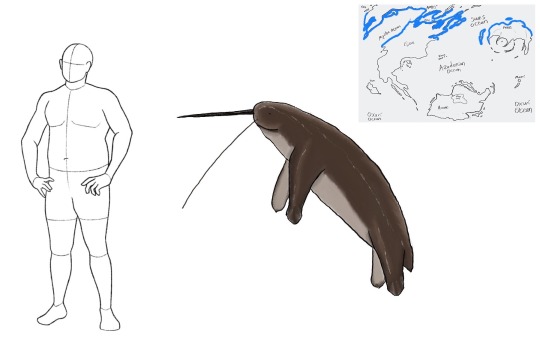
Pictured: the Mytha Blindseal, found along the coasts of the Mytha Ocean.
Their name is somewhat misleading, as they are not truly blind, but they do have reduced eyesight in bright light. Although they must haul out onto shore to rest, mate, and bear young, they are truly at home deep beneath the waves. Diving to depths of up to a mile and staying underwater for nearly two hours, they search the seafloor for food with a combination of their night vision and long feelers. They are also the only group of Remmanites to venture down into the lower latitudes, along the coastlines of Ejoa and Faon.
6 notes
·
View notes
Text
✧ ─ 𝐂𝐇𝐀𝐑𝐀𝐂𝐓𝐄𝐑 𝐒𝐓𝐔𝐃𝐈𝐄𝐒 ─ ✧
ℍ𝔸ℝ𝕌𝕂𝕆 ℕ𝔸𝕂𝔸𝕊𝕆ℕ𝔼 ... 【 ᴛʜᴇ ꜰɪʀꜱᴛ ᴄʀʏ ᴏꜰ ᴅᴀᴡɴ 】 - ʟᴇᴀɢᴜᴇ ᴠᴇʀꜱᴇ
── "𝐒𝐋𝐈𝐓 𝐓𝐇𝐄 𝐓𝐇𝐑𝐎𝐀𝐓𝐒 𝐎𝐅 𝐀𝐋𝐋 𝐓𝐇𝐎𝐒𝐄 𝐖𝐇𝐎 𝐖𝐎𝐔𝐋𝐃 𝐃𝐀𝐑𝐄 𝐓𝐎 𝐂𝐀𝐋𝐋 𝐓𝐇𝐄𝐌𝐒𝐄𝐋𝐕𝐄𝐒 𝐎𝐔𝐑 𝐌𝐀𝐒𝐓𝐄𝐑𝐒."
I know its been a while since I've done one of these but bear with me; I've been thinking quite heavily upon the fact that I use a lot of religious references within my writing with Haru, particularly in his league verse with @bells-of-black-sunday's Tarhos - and I don't think I've ever went into detail about how literal it is. When its said that Haru worships the ground Tarhos walks on and sees him as a God ...
It's 100% literal;
Haruko legitimately views Tarhos as a fallen ancient God who has given him the power and influence to save his country, his people, and drive out an invasive pest that threatens to destroy everything he holds dear. This is largely due to the timing in which they met; they did not meet on the first day of the Noxian invasion - Tarhos was on the Northern coast of Bahrl and Haruko was on the Southern coast when the invasion began. Before the war began Haru lived in relative peace with his family and his community, a 300 year old Vastaya who did not drive a lot of conflict and was happy with his little life. Within the first few weeks of the invasion Haruko lost all of that, his community was gassed, his family was killed, and he could not defend any of it - the best he could do was heed his mother's warnings and flee to the North. He stewed in his mind for weeks on end that were filled with nothing but misery, carnage, and the desecration of life - and not a single GOD answered his prayers.
He prayed to the Spirit, to the Gods of Targon he'd heard whispers of, to the Sun, the Moon, and not once did he receive any sort of solace from the laceration of his homeland. Not only that but the farther North he went the more whispers of how Karma, the Kinkou, and many others were opting for peace - which destroyed Haru's faith in his own fellow man too. The leaders and spiritual guides of Ionia were cozy up on the mainland, they couldn't even begin to imagine the horrors taking place on the island and how the Epool River had become like Styx with how many corpses were floating in its once sacred waters. Seeing the Wuju temples destroyed is what finally sent him to flee to the Mainland to try and escape the waking HELL that was the active conquest of Bahrl. His grief was insurmountable, his very soul quaking with the very Land's screams of torture as Guardian tree's were burned and its people ransacked, killed, and used like trophies.
Haruko's spirit had cracked violently by the time he met Tarhos, and it was by mere chance that Haru's spear was knocked away on a coastal assault just before he was about to leave; and it was chance that the Noxian fleet's churning motors knocked the Dakrin weapon free. When he saw a blade of sanguine within the pools he wasn't thinking about if it would harm him, he was only thinking about how it would block the next sword thrusting at him. The moment his fingers wrapped around the hilt he was immediately invaded; his mind instantly boiling with a poison stew as he saw inside of the mind of a Darkin. He almost lost himself but through sheer force of will he pushed Tarhos' being down into submission in his mind and suddenly - the Noxians within his path were falling like flies. The blade absorbed the filth and viscera, and once it had gained enough strength; it spoke to him ... and answered him. This bloodthirsty, screaming God locked within a sword was the only thing to have EVER answered him and show him its barest power by allowing Haru to litter the beach with bodies without earning a single scratch.
Gods, for most of history, were not loving and benelovent beings, they were explanations for carnage, horrors of nature, and the unknown - beings that stood upon the pinnacle of existence and stewed within the bowls of the pit of terror inconceivable by the mortal mind. This act in and of itself, to be able to steal the lives away of so many without consequence - Haruko was in awe, nothing else could possibly explain in his mind what had just happened but divinity. Given his life and origins Haru never had any education on Darkin, they didn't concern him and he didn't even know they existed since his village was small and he's never left Ionia. All he knew is that finally something had answered him.
Even so, once this was all over Haru was able to put the weapon down, but the connection remained and the Vastayan was given a choice - Tarhos was impressed enough by his bravery that he didn't dominate Haruko when he was vulerable again after the fight. He could leave Tarhos behind on this ship and doom someone else to become his vessel or ... he could pick the blade back up and drink down the blood within it; to gain power like he felt on the beach, to never have to be alone and scared ever again. The choice was easy to Haru; the war was still raging and he saw well enough into the Darkin's soul as well to know that Tarhos was much more than what he appeared to be, both mentally and the physical shape he took. After weeks of disassociating Haru's second grasp of Tarhos awoke his mind and reconnected every bit of him back together again; his essence and his physical form had never felt so connected. Himself and Tarhos were present in every muscle twitch and pump of blood in his veins, he felt strong for the first time since the invasion began.
Now able to control his fate and with the power of a God in his soul, Haruko finally had security; his faith to Tarhos a stepping stone into a higher plane that will allow him to grasp all of his dreams with the right amount of effort. Even ones that seemed impossible before. The Darkin had already proven his loyalty and honorable nature to Haruko and the Vastayan found it easy to trust him, its difficult to not trust someone after seeing every corner of their mind and sensing their very existence in every waking moment of your life. Tarhos proved that he could answer Haruko's prayers and this is what drives Haru to actively search and find a proper Vessel for conquest. As a showing of his dedication to Tarhos, Haruko is even willing to go so far as to cut down one of the most powerful creatures in Ionia for Tarhos to take over; A Dragon. Not even this act caused a flicker of doubt in his mind; watching that noble creature be cracked to bits was one of the most pleasurable visions he'd ever seen - he'd finally be able to hold his other half and gaze upon his God within a more fitting vessel. It is a symbolic ceremony that relinquishes Haruko's commitment to the peaceful calls of Ionian leadership and places his resolve in something that has given and offered him not only a way to rest his mind and a forever companion, but means to exact revenge on those who have hurt him.
At a shallow looking it does appear to be quite Not Good™ with how Haruko will and does listen to Tarhos for guidance, he holds the Darkin's opinions even above his own at times and does allow himself to be convinced of things he might not have been before. A key example of this is his treatment of Noxians vs Ionians; his countrymen are treated kindly and even in cases of @deathdxnces he takes people under his wing - his personality calms and he lacks the same ferocity. This even extends to @deathfxnds, who, while born Noxian, Haru does not see as one - perhaps thinking that the Darkin God Kayn wields has equally cleansed his soul of his weaker limitations. Haru's incredibly brutal treatment of Noxians is both an influence of Tarhos own carnality as well as the Vastayan's seething hatred towards what was made of his people and home; the Darkin bond between the two of them brews up something truly malicious. Tarhos and Haruko are both now above what normal people are capable of, The Ascended are Gods and Haruko has been chosen to merge with one - thus making him close to one as well; and his hatred of Noxians alongside this new power has turned them into insects in his mind. He's completely dehumanized them, and he's content - even pleased - to be the one able to bathe in their blood.
Haruko has also greatly influenced Tarhos - this isn't a simple case of one taking over the other, its a perfect 50/50 split of corruption; they are one soul split into two bodies. The Darkin's view of mortals has even shifted due to the Vastayan's influence, Haru has never necessarily cared for mortals, but instead tends to view them as stumbling children who need guidance. He didn't have any urges for slaughter before the war and the ones he currently holds are saved for Noxians - and this is shown in how Tarhos specifically targets Noxians for feedings; he'll avoid Ionians. The Darkin is at ease in Ionia because of Haru's own feelings towards his home - neither of them are trying to sway the other in anyway or change them; they exist as a melting pot of two lives, much akin to the Kindred. Somehow even if Haru's physical form was destroyed, he would just end up trapped with Tarhos back in that blade - but at least now they would have eachother to keep company with in the dark.

#𝐂𝐇𝐀𝐑𝐀𝐂𝐓𝐄𝐑 𝐒𝐓𝐔𝐃𝐈𝐄𝐒#ℍ𝔸ℝ𝕌𝕂𝕆 ℕ𝔸𝕂𝔸𝕊𝕆ℕ𝔼 ... 【 ᴛʜᴇ ꜰɪʀꜱᴛ ᴄʀʏ ᴏꜰ ᴅᴀᴡɴ 】#✧ ── 𝐓𝐀𝐑𝐔𝐊𝐎 : ᴀɴᴅ ɪɴ ᴛʜᴇ ᴍɪᴅᴅʟᴇ ᴏꜰ ᴍʏ ᴄʜᴀᴏꜱ...ᴛʜᴇʀᴇ ᴡᴀꜱ ʏᴏᴜ.#mun speaks#verse: league#hi guys its been a minute since i wrote any studies but#this has been eating at me for hours so i had to get it out#i would have kept going but i was#getting a bit ahead of myself#and going off topic#i just care about haru and his relationships alot#and i think its important to have that information public for him#considering a lot of the topics surrounding him can get p dark#anyways I dont need to become mars in the tags#bells of black sunday#deathdxnces#deathfxnds#his relationships with irelia and kayn also are really interesting to me#irelia because it shows his maturity and strength of character#kayn because it shows a darker and more twisted side#also i KNOW he talks to Rhaast#I know he does
5 notes
·
View notes
Text
World Tell-All Tuesday: Maps
I made a map for The Protolith a little while ago, so I thought I introduce some of the locations:
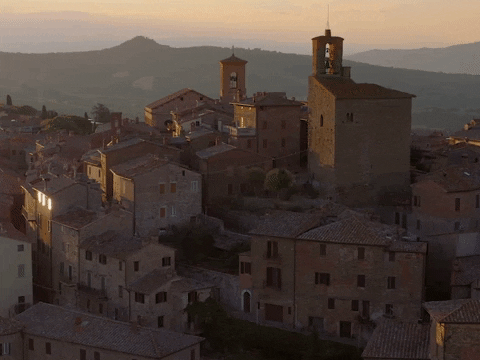
The Empire controlled its own continent, but across the oceans were two more major powers: the Southeast States, a collection of loosely organized governments in the Southern tundra, and the Western Kingdom, a peaceful nation northwest of the Empire.
[The map is not entirely consistent with the text. Don't come for me]
***
The Empire
An theocratic, oligarchic state governed by an Emperor, his High Court, and the Church. After Emperor Ambrose the First's assassination, the Empire has entered an era of instability. Currently, the Empress Mother and the Child Emperor rule. The Empire has a temperature climate with regions of mountains and plains.
There are three important cities in the Empire:
Lorenzia
Our main setting Lorenzia is the capital city of the Empire. Lorenzia is a mountainous, coastal city. The city has several neighborhoods including the docks, downtown, center city, the university district, the marketplace district, and uptown.
Key landmarks include the bathhouse, built into the side of a mountain by center city, and the Lorenzian temple, a strange building in the plains north of the city.
Lorenzia is known for its modern and indulgent sexual attitudes despite the strong church presence.
Astriel
A pious city north of Lorenzia
“I’ve been so recently fascinated by the culture wars here in Lorenzia,” Nathaniel explained. “Your Worship, I hail from Astriel.”
“A Godly city, of course.”
“So you understand! Lorenzia is such a city of contradictions. Historically, the church made many allowances to placate the local culture and that has lived on for centuries. But – as you surely know – the church has recently supported new regulation. It’s quite the departure.” Nathaniel shrugged but his eyes were lit from within.
Harcross
A rural town near the Southern border
There was an inn which sat along a well established path for travelers coming up from the southern Empire toward the cities, Harcross or Lorenzia. Three women ran this inn: Darcy, Clara, and Josephine. Like any mortal, they’d been born somewhere else, found each other, and set up shop in an old building, but it felt like they’d always been there – like they’d sprung up from the earth, fully formed with this inn around them.
The Western Kingdom
A tropical nation north of the Empire. A pacifist nation, the Western Kingdoms resisted advances from the Empire for centuries using only defensive tactics. This kingdom is known for its colorful flora, dangerous fauna, and its illustrious silk.
“Commander Noble? You may have heard of him. Single-handedly, he opened trade with the Western Kingdom.”
The Southeast States
A conglomeration of states run by a weak central power and fueled by serfdom, the Southeast States are currently at war conflict with the Empire.
“The embargo on the Southeast States has led to a shortage of ore among other minerals. I ask the court once again, when will this conflict cease?”
The World Wound and its Surrounding Islands
The World Wound was a crater, formed by an ancient meteorite and partially submerged by ocean water. No expedition to the crater had ever made it there and returned to tell the tale.
Charlotte’s mother was from neither country. Instead, she was born on an island chain off the coast of the Western Kingdom, and just south of the World Wound.
#MS: tell-all tuesday#writeblr#maps#worldbuilding#fantasy worlds#fantasy#romance#gaslamp fantasy#protolith
4 notes
·
View notes
Text
The Unity of Skovlan, Entry 31: The General
The Unity of Skovlan is an upcoming unofficial supplement to Blades In The Dark about the fall and rise of the Skovlander people. This series explores what it is all about in the leadup to its September release.
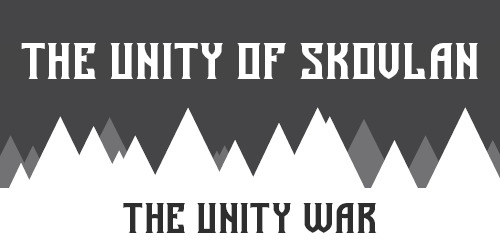
As we enter the Fracturing Period, the final coastal fortress of Reaxh on the western coast has fallen. Queen Alayne, now attempting to avenge her late father King Aldric, has accepted that there is no longer a path to victory. All there is left is spite. For every inch the Akorosi take, the Skovlanders will make sure they pay for it with lives and treasure and leverage. Without any of the coast left, it is only a matter of time until Stonetable is captured, but that’s not going to be easy. Until that time came, the Skovlanders would fight, all the way up the bitter end. These were the days when the Skovlanders began planting the seeds of future revolution. If Skovlan was going to fall, the Skovlanders never would. The Unity War was ending, but even then, Skovlan looked to the future. One day, this would all matter.
What if the Skovlanders let a castle fall with the Squad hidden deep inside so they can sneak up and assassinate the fusion of Major General Armstrong and Ned Stark? That’s this Mission.
Seriously.
For real.
I conceived of General Teaves, the Ox of Akoros, as mostly Olivier Armstrong, a towering woman whose cold eyes and relentlessly brutal patriotism led her to success after success after success, all while wearing the huge black wolf pelt cloak of Ned Stark and wielding their enormous greatsword. Teaves is probably the single most powerful soldier the Squad will ever have to fight, and if the players still happen to have any qualms about outright assassinating enemy officers, this one is going to be extremely difficult (or the players may just want to give this Mission a pass).

As is introduced in the Opposition section, this is the Imperium’s Southern army, not the only army. Given my lore of Stonetable being the ancient and definitive capitol atop the mountains that cover the northern half of the island, losing the south or forcing the Akorosi out for now won’t change the course of the war — it would have long-term supply ramifications, and obviously affect the lives of the remaining Skovlanders there, but even if this Mission pushed back the entire Imperial army it wouldn’t be enough. That said, Teaves is also likely to be replaced if killed, which is why this Mission is so much more about costing the Imperium something and exacting personal vengeance on a hated foe — not that buying time while the southern army regroups isn’t a benefit.
As we enter the Fracturing Period, there are no longer any Valor rewards for making it back with anyone alive. Come back a failure and there’s no consolation prize. You’ll still get whatever you might earn from the Optionals, but Last Stands are really on the table now.
Additionally, kidnap is a permissible end state for Teaves, but this is a bit of a trap. It is very hard to take Teaves alive, and a couple of the Optionals will be ruinously hard without killing The Ox Of Akoros. It’s there if the Squad is still clinging to a moral objection to being assassins, which is a valid mindset, but at this stage of the war it really limits what can be done, and the players should feel that.
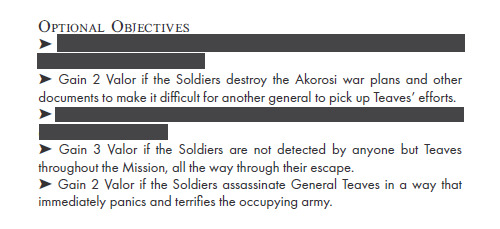
I’ve revealed one of a couple of Optionals that will get the Squad sidetracked from just tracking down and killing Teaves, pushing them to explore Castle Adriack further. I like this one because it emphasizes how the whole strategic point of this is delay. Picking up the pieces of the southern army and restoring it will take time, and the Skovlanders can try to regroup in that window or push their luck hitting the disorganized remnants. The longer the Skovlanders can keep the Imperium split between the two fronts (southern tundra and northern mountains) the longer Stonetable will hold. The Sneaking Mission Optional is going to take a ton of resources, probably accepting a ton of stress from Resisting alarm-increasing Consequences. I’ll say that while all five Areas of the Mission have Clocks, none of them is actually an alarm! This is both blessing and curse. On the one hand, the GM is going to have a bunch of things to tick that aren’t raising an alarm. On the other, the GM doesn’t have to wait to fill a Clock — any Consequence could rain guards on the players’ heads. Of course, given the situation, that would basically be an instant Desperate Position so it would eat up a Risky Consequence to impose that, but the players are always one bad roll from jeopardizing this Optional Objective. The last one is a big danger, as it requires alerting the army that something is happening, but it doesn’t inherently expose the Soldiers. There should be some leeway on this one, in that the literal killing doesn’t have to be obvious, the staging can do it. It’s not actually that tough (as we’ll explore in a minute, The Ox is on the roof turret, and pushing them over onto the soldiers working far below would do it) but it will make escaping much harder, and figuring out a way to do this while also doing the Kidnap path will be challenging.
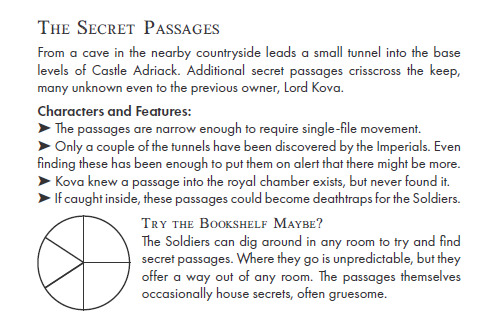
This is how the players stowed away during the takeover of the Castle, and with a Controlled or Risky Position they’ll probably still be hidden in the Passages leading to the low levels. Finding and using the Passages is the key to the Sneaking Mission, but their unpredictability gives the GM a ton of flexibility to put together setpiece moments. As mentioned here though, don’t get bottled up in the passages or risk a quick death.

This is, ultimately, a bit of staging ground for the final encounter. If the Squad gets in and disables the guards, they’ll have a bit of time to breathe and put things together. The safe represented by the Clock is, ultimately, interesting without being strictly helpful. It isn’t an Optional Objective. If the GM has an idea for a reward, go ahead, but it’s mostly a narrative victory and a thing to have to choose to carry or leave behind. If you’re really looking for a mechanical boost from it, I’d suggest +1 to the next Engagement roll for the morale improvement. The final Feature is a “shortcut” to victory if the players try it. They’ll need to stay hidden as the General comes back in and eventually goes to bed, easier said than done, but if they get there it will make quietly killing Teaves much easier. It’s still no instant-kill, as Teaves’ reflexes and strength will keep them from being flawlessly murdered, but it’s much easier than the next Area’s Clock. That said, if the players do this, they have definitively embraced being assassins, and the “immediately panics and terrifies” Optional is blown, as Teaves likely wouldn’t be discovered until morning, which is hardly immediate.

Teaves knows something is up the moment the Squad is on the stairs to the roof. They don’t know what, and don’t immediately find the Squad or anything, but they’re not at ease. Fighting them is an absolute nightmare — a 12-step Clock is huge for killing a single person, and their immunity to Group Actions will keep everyone on their toes. If the Squad skipped the side Objectives and took the least Stressful paths up, they can probably take Teaves on. If they’re already getting tired, this fight is going to suck. Beyond the Group Action immunity though, the rules are still normal, so it’s not like instantly Desperate or anything. Play carefully and don’t get too unlucky with the rolls, and the General can be whittled down. Plus, once on the roof, the howling wind and the private bedchamber below means the players don’t need to worry about alarms. It’s as close to a private showdown as the Squad are likely to ever have, and the Ox is balanced to fight a full group alone.
The amount of focus the escape requires is very context-dependent. If the players are trying to take Teaves with them, or if the alarm is raised (whether from previous action or from the final Optional Objective) and the way is especially blocked, play it out. If the players are still succeeding on the Sneaking Mission Optional, play it out. Otherwise, probably cut past it.
Next time, we’ll take on a very different Mission: The Siege.
The Unity War releases for PWYW on September 1, 2023. Check out https://tinyurl.com/tuos-details for the rest of this series! Sign up for my Patreon at https://patreon.com/thelogbookproject for a preview, and full early access to the game! See youWednesday!
2 notes
·
View notes